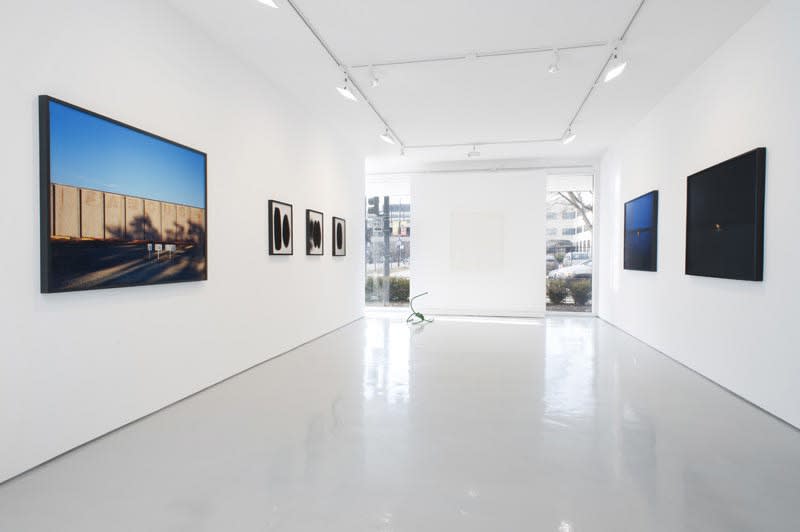Our new year’s resolution: to be ever-present in this contemporary moment, while remaining resolutely conscious of our past, and ambitious and hopeful for the future.
Justin Cooper’s new series of drawings Fields are built up through a repetitive act of mark making to suggest a phantom, imagined microscopy at various degrees of magnification. While smaller moments within the drawing mime that of the casual doodle, Cooper elevates these smaller gestures to an extreme, all-over monumentality. Jason Foumberg in Chicago Magazine describes these drawings as “some of his best yet.”
Sheree Hovsepian‘s work is a multi-faceted investigation of photographic processes. In our first solo show with the artist, Hovsepian’s black and white photograms, hypnotic video, and delicately balanced wall-based installations have a physicality that relates very naturally to the body, and more specifically to the artist’s hand. Touch, or the haptic sense, may be more commonly associated with painting or sculpture, but Hovsepian’s tactile manipulations are very present in her mostly abstract photographic works.
The Alleys and Parking Lots series continues Joel Ross’s interest in public signage, veering off the open road to examine text as it interacts with the built environment: the in-between spaces of alleys and parking lots. The artists construct signs, which they clandestinely install, photograph, and abandon at locations between Chicago and Southern Illinois, resulting in a series of large-scale, color photographs.
For this exhibition, Schneider produced a series of fifteen large–scale color photographs of a house engulfed in flames. Standing alone on an island in the middle of a lake, the small house burns eternally, with each photograph capturing the fire at different times of day, in various seasons and weather conditions.
In response to Robert Smithson’s works and writings, specifically those on entropy, Schneider conceived of Burning House to undermine the second law of thermodynamics by creating a fire that never fully destroys a house. These striking, cinematic landscape photographs continue Schneider’s interest in representing the psychological by staging uncanny scenarios.




